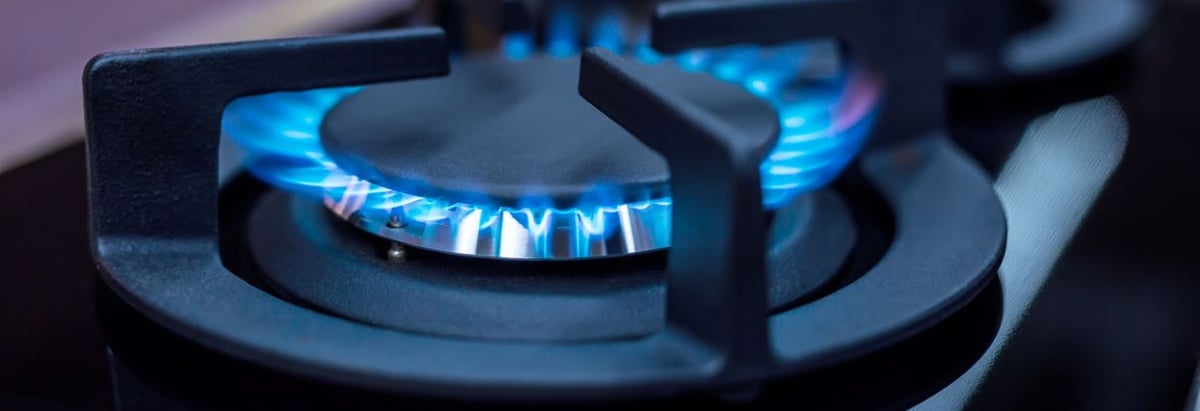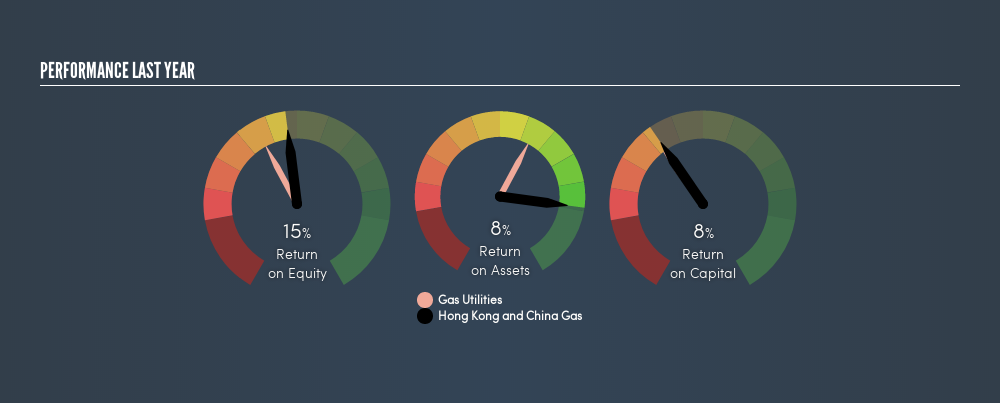- Hong Kong
- /
- Gas Utilities
- /
- SEHK:3
Do The Hong Kong and China Gas Company Limited’s (HKG:3) Returns On Capital Employed Make The Cut?

Today we'll look at The Hong Kong and China Gas Company Limited (HKG:3) and reflect on its potential as an investment. Specifically, we're going to calculate its Return On Capital Employed (ROCE), in the hopes of getting some insight into the business.
First, we'll go over how we calculate ROCE. Next, we'll compare it to others in its industry. Then we'll determine how its current liabilities are affecting its ROCE.
Return On Capital Employed (ROCE): What is it?
ROCE measures the amount of pre-tax profits a company can generate from the capital employed in its business. All else being equal, a better business will have a higher ROCE. Overall, it is a valuable metric that has its flaws. Author Edwin Whiting says to be careful when comparing the ROCE of different businesses, since 'No two businesses are exactly alike.'
So, How Do We Calculate ROCE?
Analysts use this formula to calculate return on capital employed:
Return on Capital Employed = Earnings Before Interest and Tax (EBIT) ÷ (Total Assets - Current Liabilities)
Or for Hong Kong and China Gas:
0.079 = HK$8.4b ÷ (HK$133b - HK$26b) (Based on the trailing twelve months to December 2018.)
So, Hong Kong and China Gas has an ROCE of 7.9%.
View our latest analysis for Hong Kong and China Gas
Is Hong Kong and China Gas's ROCE Good?
One way to assess ROCE is to compare similar companies. Using our data, Hong Kong and China Gas's ROCE appears to be around the 8.7% average of the Gas Utilities industry. Separate from how Hong Kong and China Gas stacks up against its industry, its ROCE in absolute terms is mediocre; relative to the returns on government bonds. Investors may wish to consider higher-performing investments.

It is important to remember that ROCE shows past performance, and is not necessarily predictive. ROCE can be misleading for companies in cyclical industries, with returns looking impressive during the boom times, but very weak during the busts. This is because ROCE only looks at one year, instead of considering returns across a whole cycle. Since the future is so important for investors, you should check out our freereport on analyst forecasts for Hong Kong and China Gas.
What Are Current Liabilities, And How Do They Affect Hong Kong and China Gas's ROCE?
Current liabilities include invoices, such as supplier payments, short-term debt, or a tax bill, that need to be paid within 12 months. The ROCE equation subtracts current liabilities from capital employed, so a company with a lot of current liabilities appears to have less capital employed, and a higher ROCE than otherwise. To counteract this, we check if a company has high current liabilities, relative to its total assets.
Hong Kong and China Gas has total assets of HK$133b and current liabilities of HK$26b. As a result, its current liabilities are equal to approximately 20% of its total assets. This very reasonable level of current liabilities would not boost the ROCE by much.
The Bottom Line On Hong Kong and China Gas's ROCE
With that in mind, we're not overly impressed with Hong Kong and China Gas's ROCE, so it may not be the most appealing prospect. Of course you might be able to find a better stock than Hong Kong and China Gas. So you may wish to see this freecollection of other companies that have grown earnings strongly.
If you like to buy stocks alongside management, then you might just love this freelist of companies. (Hint: insiders have been buying them).
We aim to bring you long-term focused research analysis driven by fundamental data. Note that our analysis may not factor in the latest price-sensitive company announcements or qualitative material.
If you spot an error that warrants correction, please contact the editor at editorial-team@simplywallst.com. This article by Simply Wall St is general in nature. It does not constitute a recommendation to buy or sell any stock, and does not take account of your objectives, or your financial situation. Simply Wall St has no position in the stocks mentioned. Thank you for reading.
About SEHK:3
Hong Kong and China Gas
Produces, distributes, and markets gas, water supply and energy services in Hong Kong and Mainland China.
Second-rate dividend payer and slightly overvalued.
Similar Companies
Market Insights
Community Narratives



